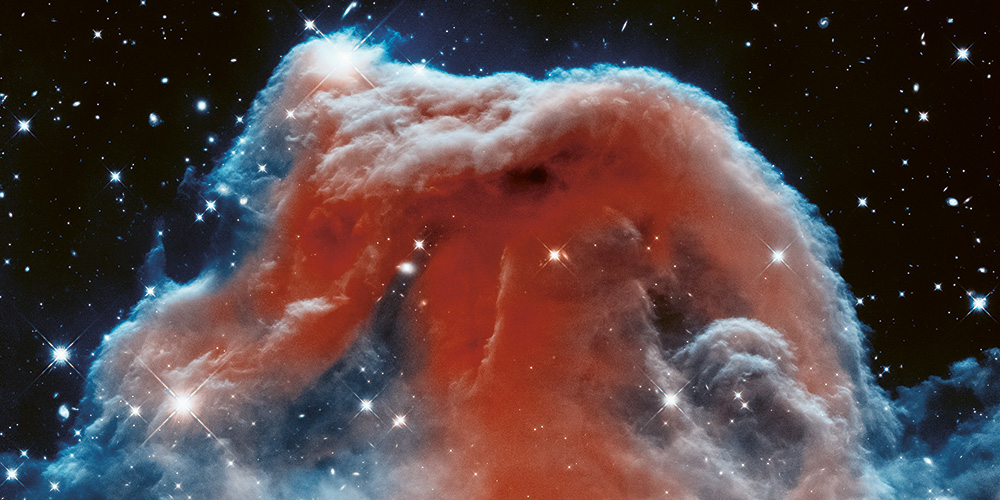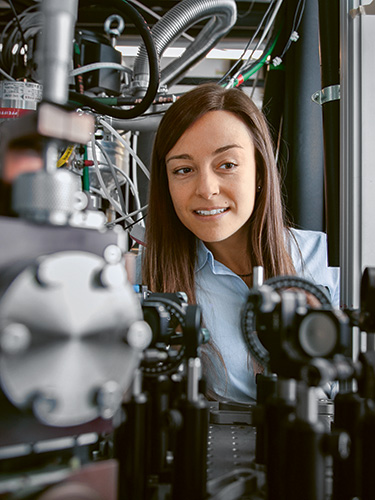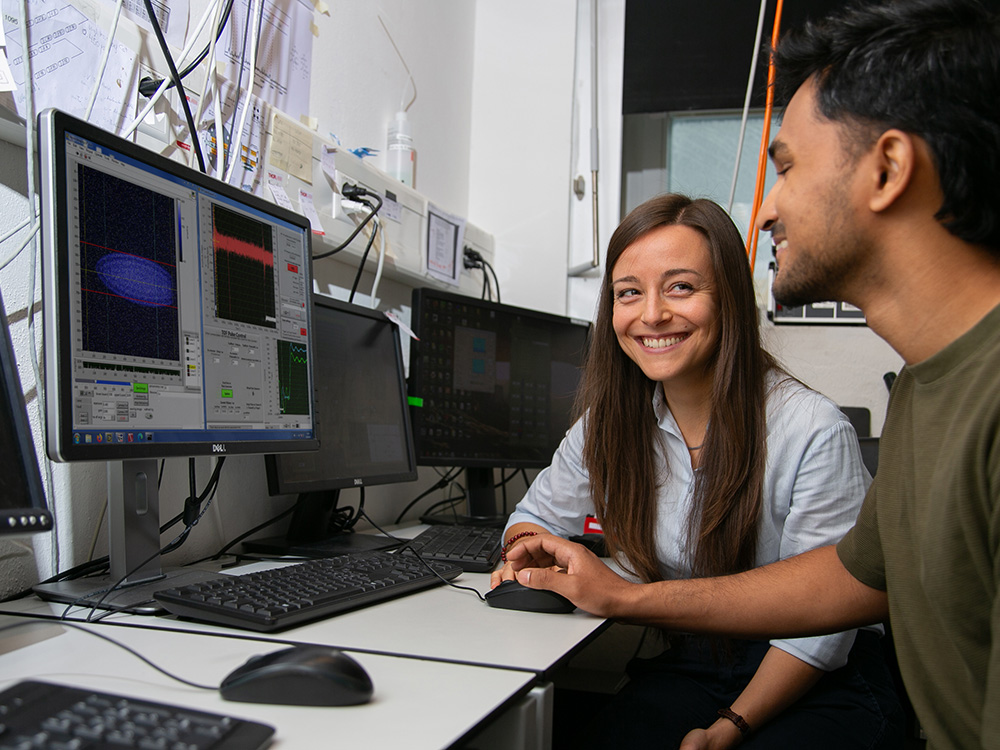Chemistry between the stars.
Text: Angelika Jacobs
Astrochemist Jutta Toscano studies how molecules react with one another in the coldest and darkest regions of space. Her aim: to better understand the nature of the universe.
Areas of the night sky that appear completely black between the stars host giant clouds of cosmic dust floating in space, which prevent light from passing through. These “molecular clouds” are the darkest and coldest regions of the universe and are home to some extraordinary chemistry, which produces exceptional molecules that would disintegrate immediately on Earth.The secret to these remarkable molecular kitchens is that they are protected from radiation, which would cause large structures to break down again. In their ultracold, lightless pots, the only reactions that can occur are those requiring no external energy. “This is completely different from chemistry on Earth,” explains astrochemist Jutta Toscano, who is — by contrast — positively beaming with energy as she talks about her research. Put simply, this field of science is essentially about how the universe works — and the big question of how the molecules that made life possible came into being.
“Nearly all the information we have about molecules in space comes from observations,” says Toscano. Special telescopes with powerful instruments known as spectrometers can be used to measure which molecules are present and in what concentrations, but that only provides a snapshot. “We want to understand why these molecules are present in those quantities, what the area looked like in the past, what conditions led to its current state, and how the composition of the universe will continue to evolve,” explains Toscano.
A piece of cosmos in the lab
In order to answer these questions, Toscano studies the chemical reactions in the airless and lightless cosmos — without a spaceship or space suit, but with the help of complex instruments. In a windowless laboratory in the basement of the Department of Chemistry, she shows me a device that spans almost the entire room and whose inner workings mimic the interstellar molecular kitchen as closely as possible. To the untrained eye, the instrument is an inscrutable construction made up of metal tubes and hoses, additionally embellished with aluminum foil in places. It is part of the research infrastructure of Stefan Willitsch’s team. Toscano works closely with Willitsch, who specializes in controlled molecular states of ions at low temperatures close to absolute zero. Reliable data on reaction dynamics in space is scarce. “It is, however, indispensable for computer models and simulations in order to understand the chemical composition and evolution of the universe,” says Toscano.
As part of her Ambizione grant from the Swiss National Science Foundation, Toscano is researching the reaction between two components that are also central to life on Earth: water and carbon. Through her experiments, she aims to determine whether the rotational state of water molecules affects the reactions in interstellar clouds. “In previous astrochemical models, water was simply water, regardless of whether the water molecules had enough energy to rotate or not,” says Toscano; but there are indications that this idea is too simplistic. “The compounds that form and how often they form could be very different depending on the rotation of the water molecule. That’s what we want to measure.”
Technical tricks and perseverance
Standing next to the complex instrument is Toscano’s doctoral student Aswin Ravindran, who has just successfully completed a key step in the experiment. To cool the molecules down to near absolute zero, he and Toscano use what are known as Coulomb crystals. By interacting with these special crystals, the molecules reach the extreme subzero temperatures required for the experiments. “Until now, we had not been able to produce crystals with the exact components we need. It took some trial and error, followed by a lot of refinement,” explains Toscano.
Ravindran’s efforts met with success just before the meeting in the lab: The fluorescent oval appearing on the screen indicates that a Coulomb crystal has formed. Inside the instrument, the crystal will cool down charged carbon particles, which will then collide with water molecules in clearly defined rotational states. To generate these states, the researchers need to borrow a few technical tricks from the world of physical chemistry, such as the use of strong electric fields and lasers. When these components come together and react, Toscano and Ravindran want to measure which reaction products are formed and in what quantities — first with rotating water and then with nonrotating water. “Ultimately, we hope to use this data to further refine astrochemical models,” says Toscano, “and therefore to gain a better understanding of what we observe and measure in space with telescopes such as the James Webb Space Telescope.”
More articles in this issue of UNI NOVA (November 2025).



